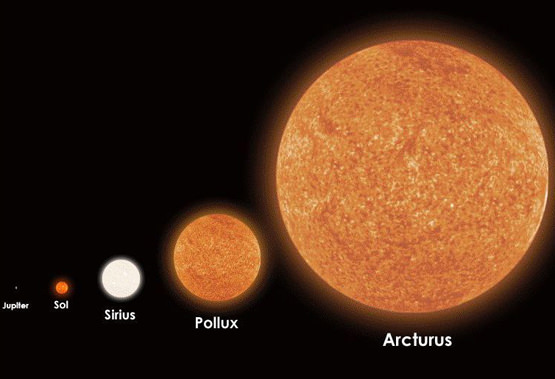[/caption]
To organize all the stars in the Universe, Astronomers use a classification system that collects the stars into groups based on their color and the presence of various elements in the star’s outer atmosphere. So, here are the classifications: O, B, A, F, G, K, M (if you need to remember then, just keep this in mind: “Oh be a fine girl, kiss me”.) K stars are cooler than the Sun.
K stars start at about 3,500 Kelvin, and can get as hot as 5,000 Kelvin. This makes them look orange-red to our eyes. K stars can actually vary in size from main sequence stars with less mass than the Sun to red giants and supergiants with many times the mass of the Sun. It’s all because of the temperature. They have weak hydrogen lines and mostly neutral metals, like Manganese, Iron and Silicon. About 13% of stars in the stellar neighborhood are K stars.
Some familiar K stars include Alpha Centauri B, Epsilon Eridani, Arcturus, Aldebaran
We have written many articles about stars here on Universe Today. Here’s an article about the closest known star with extrasolar planets, Epsilon Eridani.
If you’d like more information on stars, check out Hubblesite’s News Releases about Stars, and here’s the stars and galaxies homepage.
We have recorded several episodes of Astronomy Cast about stars. Here are two that you might find helpful: Episode 12: Where Do Baby Stars Come From, and Episode 13: Where Do Stars Go When they Die?

